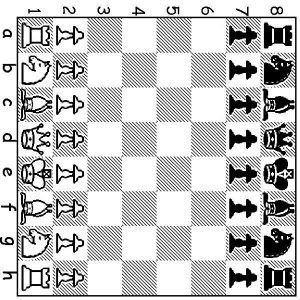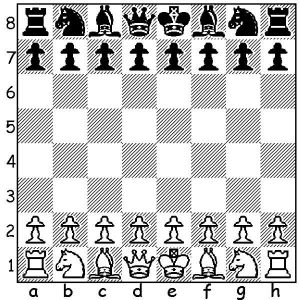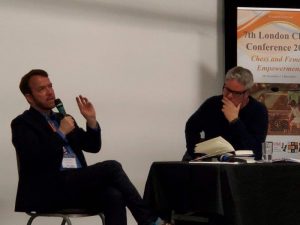
Chess in Education (CIE) Coalition Breaks New Ground
Today’s students need more than the 3 R’s. To succeed in a rapidly shifting society, they also need the “4 C’s” of 21st century skills. Creativity, critical thinking, communication, and collaboration are essential for a tech-savvy workforce. Chess involves critical thinking under pressure. Young players learn to focus, recognize patterns, weigh alternatives, and resist impulsive actions. Playing chess involves social interaction and relationship-building with teachers and children.
In the U.S., educators are just beginning to realize how powerful chess can be. Even at the most basic levels, learning chess under the guidance of a caring teacher can bolster the most academically challenged student. It can help students at any level make deeper connections between their day-to-day academic performance and the critical, creative, and behavioral skills so necessary for achievement in our 21st century world.
Today, a coalition of chess training organizations is making the adoption of chess learning in schools much easier. Teachers, not chess experts, guide students in connecting chess to education.
Our three Chess in Education (CIE) Coalition organizations – Chess in Schools, ChessKid, and ChessPlus – have joined forces to launch a website and chess training resource to help educators and parents incorporate chess education in our schools.
Our mission is to advance the potential of chess in education in the United States. Working with leaders in the international Chess in Education (CIE) movement, we bring CIE best practices to educators in a way that aligns with their education goals and standards. As a result, we help teachers use chess as an educational tool to help students develop the skills needed for success in and beyond the classroom.
Contact Info
For more information, email us at cie@chessineducation.us or call 1-888-400-7182 Ext. 3.
Connect through the website, chessineducation.org.
Knights in the Park
By Rachel Schechter
The su mmer heat can’t stop these students. Unflinching and undaunted, these intrepid future kings are among the first – if not the first – Illinois chess players returning to over-the-board chess (OTB) after enduring months of lock down and virtual learning.
mmer heat can’t stop these students. Unflinching and undaunted, these intrepid future kings are among the first – if not the first – Illinois chess players returning to over-the-board chess (OTB) after enduring months of lock down and virtual learning.
Why is this moment significant? Instructor and organizer Rachel Schechter notes that when every national educational institution closed its classrooms and opened online learning portals, it was the smart move, the right move for the moment. An adequate substitute.
“However,” Schechter continues, “It was a substitute. By the end of term, students seemed lackluster and unfocused. They craved normal socialization. At the start of June, I invited a handful of current and former Montessori students to play chess in Meadowbrook Park in Savoy, Illinois.”
Everyone took the appropriate hygienic measures. Parents gave their approval. After four weeks, the initiative demonstrated that OTB chess can make a safe, secure comeback.
What do the students say? “Where’s the pizza!” Even 90-degree heat doesn’t deter their dedication to the royal game. Pizza seems more than a fair reward for these fearless chess warriors.
Schechter concludes, “It’s a safe, clean, healthy environment. And it’s working. Hopefully, a few more players will join us for the rest of the summer; and more like-minded chess organizers will get their players back on board.”
Chess and Literacy
By Jerry Nash

Both the chess board and the game of chess call attention to the same literacy proficiencies demanded by other forms of media, both print and graphic. These include the following:
- Visual Orientation
- Symbolic Language
- Translation from Two-dimensional to Three-dimensional
- Pattern Recognition
 The two diagrams on the right serve to illustrate all four of these required skills. Those familiar with the game (in other words, those who have already acquired the appropriate chess literacy skills), will understand that the top diagram would almost never be found in a chess-related book, magazine, newspaper article, or even a computer-generated chess game or tutorial.
The two diagrams on the right serve to illustrate all four of these required skills. Those familiar with the game (in other words, those who have already acquired the appropriate chess literacy skills), will understand that the top diagram would almost never be found in a chess-related book, magazine, newspaper article, or even a computer-generated chess game or tutorial.
Just as we read sentences from left to right, the standard for the visual orientation of chess diagrams in any medium would generally have the White pieces at the bottom, the Black pieces at the top. The symbols that comprise the language of modern chess, algebraic notation, are the numbers on the left and the alphabet displayed at the bottom.
Just as an elementary school student must learn to recognize the patterns contained in letters, words, and sentences, the beginning chess player must learn to recognize the patterns contained on the board and to translate the symbols for the chess pieces in order to follow the game on paper or on a computer screen or to re-create the game on a “real” board. The second diagram “of course” represents the starting position of a game of chess. However, only the person who has learned the pattern would know this fact. Otherwise, these symbols could be seen simply as a random collection of symbols – even if they are mirrored on the opposite side of the board.
How can we apply this chess knowledge to build literacy abilities in the classroom? By asking students to set up the chess board from the bottom diagram, we can incorporate all of these skills at once. Students can share verbally how they accomplished the task. The teacher can then assist students in drawing parallels to how they are learning to read. Many students will be excited to realize that they are already learning a new language!
European Partnership for Chess in Schools
Article by Luca Gallina
 Black and White Sport: CHESS was a project co-funded by the Erasmus+ Programme of the European Union from January of 2018 until December of 2019. The project involved organizations in four countries: Sport Club Glamour Events (Italy); Association Centro Social Paroquial dos Santos Mártires (Portugal); Catalan Chess Federation (Spain); and Latvian Academy of Sport Education (LASE) (Latvia). The initiative included five schools, ten teachers, and one hundred students (6-7 years old).
Black and White Sport: CHESS was a project co-funded by the Erasmus+ Programme of the European Union from January of 2018 until December of 2019. The project involved organizations in four countries: Sport Club Glamour Events (Italy); Association Centro Social Paroquial dos Santos Mártires (Portugal); Catalan Chess Federation (Spain); and Latvian Academy of Sport Education (LASE) (Latvia). The initiative included five schools, ten teachers, and one hundred students (6-7 years old).
In this project, the innovative idea was to establish a stable European partnership including a University, chess clubs, schools, federations, chess players, and those who are enthusiasts of chess, The goal was to provide for the teaching of chess in European primary schools (ISCED 1).
Though this type of project had previously been discussed, no one had succeeded in setting up a work plan to reach the intermediate steps to achieve the objective. This initiative, for the first time in Europe, proposed an intermediate step of setting up a common teaching model among all European schools: this new teaching model would then be shared with the main European figures in the chess field – through reference models, explanation reports, and didactic materials.
 The project’s added value at European level was in the coordinated participation of various European organizations and bodies which had already participated together in an earlier Erasmus+ programme. In time, the organizations refined common interests and practices and were willing to share them with small local sports associations and with schools in order to reach a more local level although in a European framework: a local level by experimenting in schools a curriculum model for teaching chess in primary schools (ISCED 1); a European framework as to establishing a Network aiming at the inclusion of chess in the curriculum of EU primary schools (ISCED 1). For this purpose, at the project’s conclusion the Network submitted the project results along with a request for the inclusion of chess in primary schools to the European Commission.
The project’s added value at European level was in the coordinated participation of various European organizations and bodies which had already participated together in an earlier Erasmus+ programme. In time, the organizations refined common interests and practices and were willing to share them with small local sports associations and with schools in order to reach a more local level although in a European framework: a local level by experimenting in schools a curriculum model for teaching chess in primary schools (ISCED 1); a European framework as to establishing a Network aiming at the inclusion of chess in the curriculum of EU primary schools (ISCED 1). For this purpose, at the project’s conclusion the Network submitted the project results along with a request for the inclusion of chess in primary schools to the European Commission.
The European Network Chess at School (ENCS) was established by the partnering organizations.
The aim of the European Network Chess at School is to promote the inclusion of chess as a compulsory subject in the ISCED 1 schools of the European Union, through the following main activities:
- Dissemination of the educational chess book: “Chess Course Model for Primary Schools” developed by the project;
- Development based on the “Chess Course Model for Primary Schools” of a new model for the purposes of implementation in other school levels (ISCED 2 and ISCED 3);
- Spread and promotion of the European Network Chess at School in order to involve other Sports Associations and Schools.
 Website: https://blackandwhitesportchess.eu/index.html
Website: https://blackandwhitesportchess.eu/index.html
For additional details about the Black and White Sport: CHESS project, contact Luca Gallina – l.gallina@csenprogetti.it.
Chess and Math in Spain
Article by Jerry Nash

February 23, 2020 – Students at Francisco de Quevedo Primary School in Fuenlabrada, Madrid have discovered a new way to learn math. They learn how to move chess pieces to collect one or more of the math information cards placed on each of the sixty-four squares of the chessboard. The cards contain math concepts such as addition, subtraction, multiplication, odd and even numbers, sequences, fractions, etc. Once they have collected their cards, they perform the math functions indicated.
The project, called “Transversality in Chess,” is the concept of Jose Antonio Coleto Calderon, a primary school teacher and chess player. Mr. Coleto began the activities four years ago in order to give support to his classes in both Language and Mathematics for primary grade students aged six to twelve years old. He asserts that this is the only project in Spain with this philosophy and methodology for using chess as a tool in the classroom.

He recalls, “I wanted to link two worlds: the educative and the chess world. So, I started to think about how I could do this. It began ten years ago. First, I started to write the philosophy of the project for two years. After that, I wrote the activities. Then I met Jose Manuel Gonzalez Guillorme, my headteacher, five years ago and I moved to CEIP Francisco de Quevedo state school to develop the project.”
Mr. Coleto is pleased with the response to his idea. “All my colleagues welcome the project and the whole school as well because they agree that chess (educative and transversal) is a great tool to be used in the classroom.” Even members of the educational board visited the school to observe the students and were impressed.
As a result, the initiative will expand to include an additional fifteen teachers at the same school. The teachers are currently participating in a year-long course led by Mr. Coleto. Not only will participants learn the chess and math activities, they will discover how to incorporate them in a way that builds on previous knowledge and encourages cooperative learning. As the idea catches on, Mr. Coleto hopes this initiative will move beyond Madrid to schools across Spain.
Chess Comes of Age in Nova Scotia
Article by Roger Langen — Secretary, Chess Nova Scotia —
 February 23, 2020 – Chess is a unique all-ages sport that is finally coming into maturity on this side of the Atlantic. Its Old World traveling ethos, of reason mixed with mystique, moved it slowly through the moils of time: from India to the Caliphate, Italy to England, until the shock of World War I caused it to recoil again eastward. Ethos is the gel in which a hidden art can thrive. In the social engineering paradise of the new Soviet Union, industrial imperatives opened the door of education wide, and chess entered in.
February 23, 2020 – Chess is a unique all-ages sport that is finally coming into maturity on this side of the Atlantic. Its Old World traveling ethos, of reason mixed with mystique, moved it slowly through the moils of time: from India to the Caliphate, Italy to England, until the shock of World War I caused it to recoil again eastward. Ethos is the gel in which a hidden art can thrive. In the social engineering paradise of the new Soviet Union, industrial imperatives opened the door of education wide, and chess entered in.
The test of value in the New World was out of doors: the frontier, the wilderness, the backyard BBQ. Indoor arts were confined to reading a map or darning a sock. If you couldn’t saddle a Knight, what use was it?
New cultural drivers have moved chess away from stereotypes of vague abnormality stuck on a lonely pedestal. Chess-in-education research, immigration, and the Internet have added value to perception and practice of the game. Cognitive science and artificial intelligence have employed chess as the fruit fly of their investigations.
A tipping point may well be the discovery that chess is not merely a game, but a healthful and powerful recreation for all ages. That it is a valuable thinking tool for the young is well known. What is new is the relatively high place it is given as a cognitive stimulus for older adults. It is second only to dancing as a defense against dementia, according to the New England Journal of Medicine (2003). Taken together, these age-sensitive points make of chess a kind of guardian angel for the mind.
Pawn Wise: The Atlantic All-Ages Chess Festival 2020, scheduled for Halifax, Nova Scotia, this summer, is organized on this idea. Chess makes and keeps you wise, and the evidence keeps rolling in, so come catch the wave! That is the Festival message.
Older adults (over 50) can choose to play in the Canadian Seniors Chess Championship, headlined by GM Evgeny Bareev (foreign players welcome, some restrictions apply). The Nova Scotia Mayflower Open is for all ages and features current top seed, GM Dommaraju Gukesh, the 2nd-youngest player ever to attain the title of grandmaster. The tournaments then pause for the Scholastic Chess Exhibition, with GM Hou Yifan as the special guest. She will join seniors and juniors as they vie together in various activities and play formats.
Of special interest will be the evening panel, Chess Considered: Four Questions, where distinguished international scholars will offer a critical framework for thinking about chess. Their fields of expertise include game theory, the philosophies of music and sport, theoretical biology, AI, the treatment of addictions, and cognitive aging. The panel format will resemble a game of chess. Is chess a sport? Is it an art or a science? Is it calculation or imagination? Is it good for the brain?
Come and find out! Our Festival is meant to be an “experience,” where chess is discovered as both a game and a cultural phenomenon. Trophies are of artisan woods, handcrafted crystal, and fine pewter. Nova Scotia wood chess sets will be on display, each handcrafted and bearing the marks of our historical peoples and natural world. Various traditions in music will accent the Festival’s different occasions.
We say come catch the wave advisably. Nova Scotia is home to the world’s highest tides. Originally named Acadie, a translation of the Mi’kmaq term for “place of abundance,” Nova Scotia’s traditional (and occasionally troubled) history of Mi’kmaq, Acadian, Black Loyalist and Celtic peoples has lately seen an enriching wave of Syrian refugee and other global newcomers. It has created a new synergy that is driving a business and cultural renewal. The province’s 2017 Culture Action Plan calls for inclusivity, strength in education, creativity and innovation, and a renewed sense of cultural stewardship.
Pawn Wise is Chess Nova Scotia’s contribution to this call for innovation and renewal. We are well supported by the Government of Nova Scotia and the City of Halifax, and by private actors. There is a belief that chess can be established as a new cultural form in our province. Festival tournament host, Saint Mary’s University, one of six in the province, understands the recruitment value chess would bring.
The Festival is expected to drive three legacy programs. Chess at the Library is already in place, a program that uses the provincial library system to introduce chess to general interest. WaveLength: Chess for Seniors will connect older adults to the benefits of chess, aided by advocacy and seniors’ groups like Fountain of Health and Community Links. Brain Waves: The Nova Scotia After-School Chess Program will be offered to all schools in the province starting in September 2020.
We cannot do it alone, of course. Our Intergenerational Chess Project, as we call it, needs help. We ask Internet and other chess educators to identify suitable programs and materials. We are vetting some of these now. A program that speaks to young and old alike would be especially valued. The door to the classroom more easily opens if the grandparent is on board before the child.
We are confident that our Festival will be an unusual and rewarding event. No one need miss out. Thanks to chess24.com, the event will be live streamed. But you may want to be there in person — to play, to watch, to contribute, and (maybe) to be a witness to history. For us in Nova Scotia at least, it will be a party — to welcome the long-awaited arrival of our ancient and beloved game.
Metaphor and Meaning – A Grandmaster’s Reflections
A Book Review by Jerry Nash
 At the London Chess Conference last month, GM Jonathan Rowson made an appearance to promote his latest book, The Moves That Matter: A Chess Grandmaster on the Game of Life (Bloomsbury, 2019). The work is partly biographical, chronicling Rowson’s life in relationship to chess. However, it is also philosophical, offering meditations on why chess is such an important metaphor for so many aspects of life and on how the game can serve as an important component in modern education.
At the London Chess Conference last month, GM Jonathan Rowson made an appearance to promote his latest book, The Moves That Matter: A Chess Grandmaster on the Game of Life (Bloomsbury, 2019). The work is partly biographical, chronicling Rowson’s life in relationship to chess. However, it is also philosophical, offering meditations on why chess is such an important metaphor for so many aspects of life and on how the game can serve as an important component in modern education.
Rowson offers this insight on why chess as a metaphor for life is so pervasive in society.
“No wonder chess has long served as the touchstone of choice for the competitive tension that defines business, sport and politics. The themes of planning ahead, knowing the opponent, anticipating responses and sacrificing for future gains are adaptable, and meaningful for anybody familiar with the symbolism of chess, even if they have never pushed a pawn.”
The Moves That Matter is Rowson’s attempt to explain what chess has taught him about life. In the process, he also posits the value of chess as an educational tool.
“The educational value of chess is that it makes asking questions a reflex, and the experience of getting better at chess is finding that your questions get richer and more pertinent…. Chess in particular may have something to teach us about the know-how of concentration: exactly how we direct attention towards the right things in the right way with the right intensity over several hours.”
Rowson’s presentation at the conference included a passionate explanation of how the struggle of winning (or losing) at chess is a wonderful lesson in the value of struggling to learn anything. No matter their background as a chess player, anyone interested in chess as a game or a teaching tool will find much to reflect upon in Rowson’s narrative.
Methodology in Moscow (Part 1)
NOTE: In October’s FOCIS newsletter, Nancy Johnson reviewed an article about the Russian schoolteacher Tatiana Ogneva and her unique approach of using fairy tales to introduce chess themes to her students. In this article we hear directly from Ms. Ogneva as she describes her experience as a chess teacher for over 25 years and over ten years as a classroom teacher and school psychologist in a Moscow primary school. When Ms. Ogneva uses the term “technology,” she means teaching methodology.

Methodology in Moscow (Part 2)
Tatiana Ogneva describes her teaching methodology (she uses the term “technology”) developed over ten years as a teacher and school psychologist in a Moscow primary school.

The experience of work in RDE classes gave me an important understanding that children’s abilities can be restored and improved. The main conditions for this are appropriate technologies and competent specialists. Therefore, the best technology for teaching chess is the one that will develop children’s abilities, and not just introduce children to the rules of chess.
Thus, I had an opportunity to work with three types of pupils: advanced, normal and low performing. As a result, I created a psychological methodological complex aimed at studying the learning ability in children of six to seven years old.
One of the important principles of remedial education is “Timeliness solves everything.” By extending the process of studying elementary chess rules, the teacher does not give children an opportunity to start the process of thinking. Not teaching children to exert efforts, one contributes to the development of mental laziness. As a result, children lose all interest in chess, when they face the first difficulties.
The introduction of chess as a compulsory subject in the school schedule determines the need to distribute the chess material taking into account the specifics of pupils’ age changes. It is known that a child goes through three stages in his or her development.
The first stage is characterized as a conditioned-reflex one. At this stage, the child acts fast, without thinking. His or her actions are built based on the stimulus-response principle. This stage is very important for training motor skills. At the second stage, the child acts more consciously, slowly. At this stage, the child is able to learn. At the third stage, speech plays a critical part. It becomes a regulator of behavior. During this period, the child becomes able to perceive generalizing concepts, paradigms, ideas, and plans.
These levels present simultaneously in each person, but to varying degrees. Depending on the novelty of the studied material and the accumulated experience, different levels will dominate.
As each class usually includes children with different dominance of levels, all these levels should be involved in a lesson for successful training of pupils. It is known from experience that at the beginning, pupils make much noise when playing chess and often have problems with discipline. It often results in excluding the game activity from the lesson plan. This is a huge mistake. Without saturation of the first level, a child will not be able to fully master the second level, let alone the third one.
It should be noted that chess lessons should not become an endless series of tasks, especially at the initial stage. One should not forget about the third level, the level of speech, which maintains the meanings associated with the semantic field. Working with children at this level contributes to creating a substantial meaning, satisfying the deepest human need for finding oneself and answering the question for what it is necessary. Due to this, the value of human communication is found, which gives the lessons a special charm.

It is for this purpose that I wrote a cycle of fairy tales called “Adventures in a chess kingdom.” So far, there are four interrelated parts devoted to studying the moves of chess pieces, the foundations of algorithmic activity, reflexive thinking and mental training of actions on a small-sized chessboard.
Working as a psychologist at the elementary school, I developed a set of psychological techniques and found out that modern children are far from the standard. One should not wait they they have performed the tasks flawlessly; unreasonable expectations increase the teacher’s distress. Children, like adults, have the right to make mistakes. I created a method for developing reflexive thinking in children by allowing them to make a wrong move in the tasks, but with an obligatory condition to indicate the strongest move of the enemy. After that, children themselves begin to realize the incorrectness of their move and independently find a move satisfying the requirements of the position. For the development of reflexive thinking, positions with a small number of pawns and other chess pieces are the best. Thus, if one creates conditions enabling children to understand a mistake, it will become an important factor for their development.
When practicing chess, children start feeling that the previous experience of emotional attitude hinders unbiased perception of the chess position and prevents them from finding optimal solutions. Under the influence of chess, children gradually develop rational forms of thinking; their range of responses and possibilities of self-regulation increase. It is for this purpose that chess lessons are introduced in the school program. The implemented teaching technology, taking into account the peculiarities of modern children, is of great importance. Only in this case, chess lessons will be useful, and everyone will be satisfied: children, their parents, and of course, teachers.
Engaging and Sustaining Chess Interest in Girls
The 2019 London Chess Conference was an incredible opportunity to learn about the global chess community’s efforts to engage and sustain girl chess players.
Girls To Grandmasters (G2GM), a New York City 501(c)(3), was one of the 38 international delegations hosted at the Irish Cultural Centre in Hammersmith, London. G2GM’s mission is to empower girls to play chess and the London Chess Conference was the perfect opportunity to learn more about how chess can attract more girl players, while encouraging female participation at all levels of competition.
 One of the most inspiring parts of the conference was its emphasis on understanding and mitigating the heavy sociocultural influences that can hamper a girl’s desire to play chess. Indeed, conference co-director Judit Polgar recently stated “Girls in chess are not treated the same way as boys.” Several federations are addressing low participation with initiatives like all-girls tournaments, female mentors, and gender-specific funding. While the impact of separate gender-specific tournaments and awards is hotly debated and still undetermined, several federations have had significant success with community-based initiatives.
One of the most inspiring parts of the conference was its emphasis on understanding and mitigating the heavy sociocultural influences that can hamper a girl’s desire to play chess. Indeed, conference co-director Judit Polgar recently stated “Girls in chess are not treated the same way as boys.” Several federations are addressing low participation with initiatives like all-girls tournaments, female mentors, and gender-specific funding. While the impact of separate gender-specific tournaments and awards is hotly debated and still undetermined, several federations have had significant success with community-based initiatives.
The US Chess Federation, for example, has spearheaded Girls Club Rooms at National Scholastic tournaments, where girls can simultaneously play chess, meet women grandmasters, and enjoy snacks, while identifying with their peer set and developing self-esteem. Gender norms influence the attitudes and behaviors of all youth (in chess and beyond!), and the Girls Club Rooms offer girls a safe space from the chaos of tournament playing halls.
 G2GM similarly strives to cultivate community and support enthusiasm for chess by promoting events like Blitz & Brunch, a series of workshops in partnership with the Central Park Chess & Checkers House. Blitz & Brunch provides chess boards, snacks, and mentorship opportunities while promoting chess as an avenue for community and collaboration, rather than competition (Blitz & Brunch discourages chess clocks). G2GM has measured a triple-digit increase in chess girls’ participation with these events. Nevertheless, in G2GM’s experience, getting girls to the chessboard is easiest when chess is part of an academic curriculum.
G2GM similarly strives to cultivate community and support enthusiasm for chess by promoting events like Blitz & Brunch, a series of workshops in partnership with the Central Park Chess & Checkers House. Blitz & Brunch provides chess boards, snacks, and mentorship opportunities while promoting chess as an avenue for community and collaboration, rather than competition (Blitz & Brunch discourages chess clocks). G2GM has measured a triple-digit increase in chess girls’ participation with these events. Nevertheless, in G2GM’s experience, getting girls to the chessboard is easiest when chess is part of an academic curriculum.
Author: Karsten McVay
Chess in Education (CIE) Coalition Breaks New Ground
Knights in the Park
Chess and Literacy
European Partnership for Chess in Schools
Chess and Math in Spain
Chess Comes of Age in Nova Scotia
Metaphor and Meaning – A Grandmaster’s Reflections
Methodology in Moscow (Part 1)
Methodology in Moscow (Part 2)
Engaging and Sustaining Chess Interest in Girls
All rights reserved. Chess in Education - US LLC is a 501(c)(3) nonprofit organization, EIN 90-1141646.

